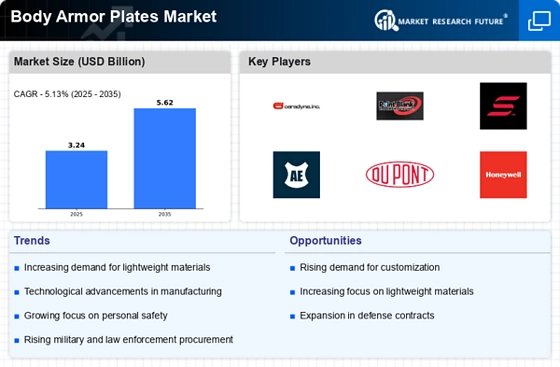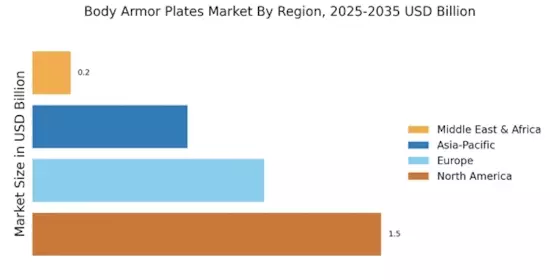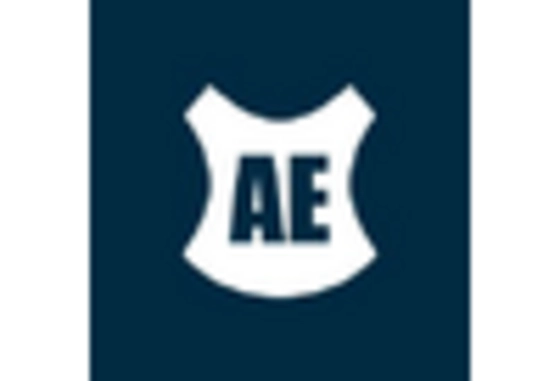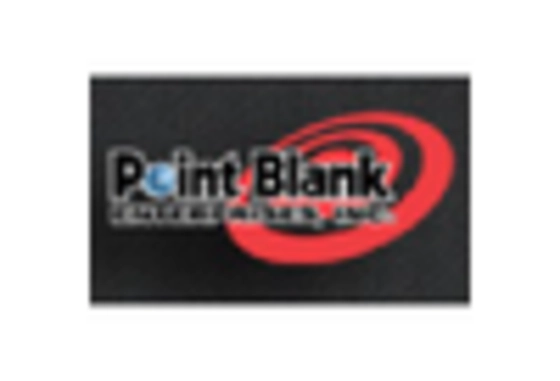North America : Market Leader in Body Armor
North America is the largest market for body armor plates, accounting for approximately 45% of the global share. The region's growth is driven by increasing defense budgets, rising threats to public safety, and stringent regulations mandating the use of protective gear in various sectors. The U.S. government has been a significant catalyst, investing heavily in law enforcement and military applications, which further fuels demand. The competitive landscape in North America is robust, with key players such as Ceradyne, Point Blank Enterprises, and Safariland leading the market. The presence of advanced manufacturing capabilities and innovation in materials, such as Kevlar and ceramic composites, enhances the region's position. Additionally, collaborations between government agencies and private firms are fostering advancements in body armor technology, ensuring that North America remains at the forefront of the industry.
Europe : Emerging Market Dynamics
Europe is witnessing a significant rise in the body armor plates market, holding approximately 30% of the global share. The growth is primarily driven by increasing geopolitical tensions, rising crime rates, and a growing emphasis on personal safety. Regulatory frameworks across various European nations are becoming more stringent, promoting the adoption of advanced protective gear in both military and civilian sectors. Leading countries in this region include the UK, Germany, and France, where demand for body armor is surging. The competitive landscape features key players like DuPont and Honeywell, who are innovating in materials and designs. The European market is characterized by a mix of established manufacturers and emerging startups, fostering a dynamic environment for technological advancements in body armor solutions.
Asia-Pacific : Rapidly Growing Market
The Asia-Pacific region is rapidly emerging as a significant player in the body armor plates market, accounting for about 20% of the global share. The growth is fueled by increasing defense expenditures, rising internal security threats, and a growing awareness of personal safety among civilians. Countries like India and China are investing heavily in military modernization, which is driving demand for advanced body armor solutions. In this region, key players include local manufacturers and international firms expanding their footprint. The competitive landscape is evolving, with companies focusing on innovation and cost-effective solutions to cater to diverse market needs. The presence of a large population and increasing urbanization further contribute to the demand for body armor in various sectors, including law enforcement and private security.
Middle East and Africa : Strategic Security Investments
The Middle East and Africa (MEA) region is experiencing a growing demand for body armor plates, holding approximately 5% of the global market share. The growth is driven by ongoing conflicts, terrorism threats, and increasing investments in security infrastructure. Governments in this region are prioritizing the procurement of advanced protective gear for military and law enforcement agencies, which is a significant catalyst for market expansion. Leading countries in the MEA region include South Africa, the UAE, and Israel, where the demand for body armor is on the rise. The competitive landscape features both local manufacturers and international players looking to establish a presence. The region's unique security challenges are prompting innovations in body armor technology, ensuring that products meet the specific needs of various sectors, including military and private security.


















Leave a Comment